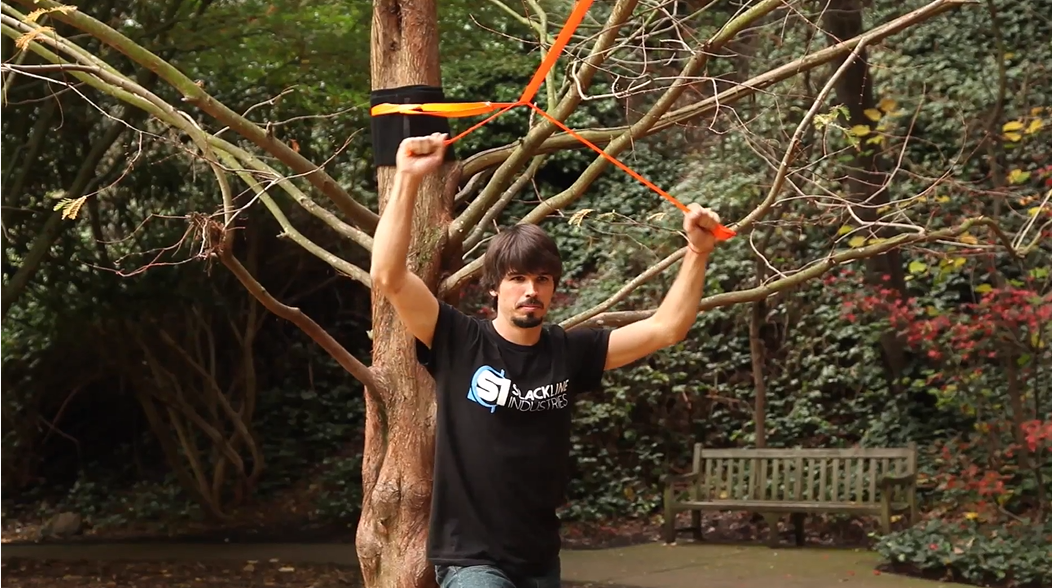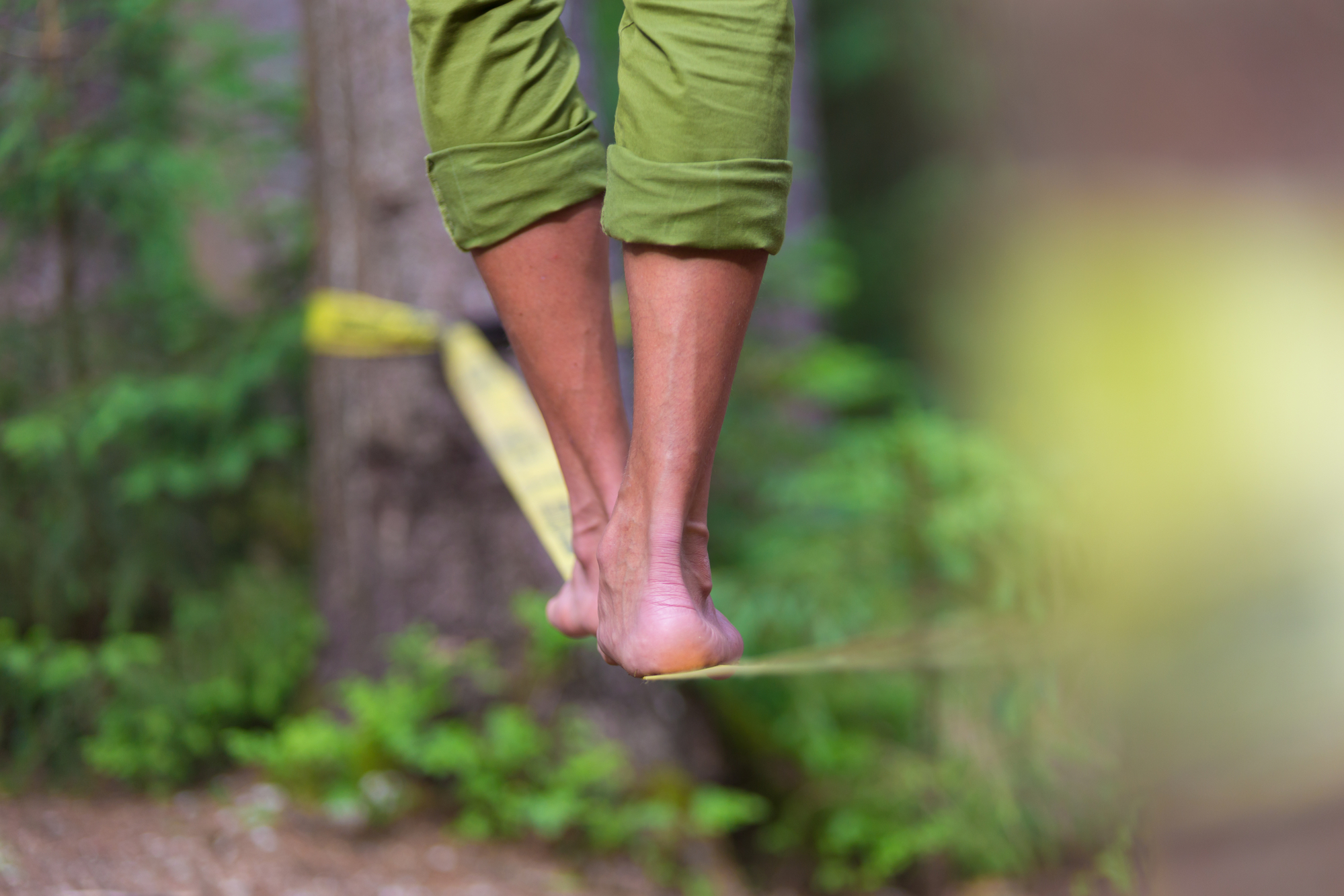Ever heard the term "helpline" in slacklining?
A slackline helpline is a type of line that helps you stay on the slackline. It is typically used when you are first starting out or if you are having trouble staying on the line.
The helpline keeps you attached to the slackline, making it easier to balance and stay on the line.
If you want to know more about helplines and how they work, read on!
How Does a Slackline Helpline Work?

Helpline by Hop On Slacklines
A slackline helpline is typically a rope or webbing mounted above the slackline for balance support.
The arms position trainer is slung over the helpline so the user can grip it to keep their arms in the correct position when walking.
It helps you keep your balance by providing an anchor point to lean against when you need it.
In some cases, the helpline is also used as a "safety net" in case you fall off the slackline.
It's a great beginner's tool that can help you build confidence and learn the basics of slacklining!
How Do I Use a Slackline Helpline?

If you're new to slacklining or having trouble staying on the line, a helpline can be a great tool to help you out.
Here's how to use one:
First, set up your slackline as usual. Then, setup a secondary line above. It should be high enough above that you touch it with your arm above your head, slightly bent.
Once the lines are setup, take the arms position trainer and sling it over the helpline.
Next, grip the arms position trainer and step onto the slackline. Walk out to the middle of the line and find your balance.
Your arms should be at a 45-degree angle when your arms pivot around your head with the arm position trainer.
Do not grab both ends of the arm position trainer. Only one end should be grabbed using the other hand to obtain a 45-degree angle between your hands.
In addition, do not grab the helpline directly, as this will put both your arms in a poor balancing position.
With practice, you'll be able to walk the line without needing the helpline!
Is a Helpline Really Necessary for Novice Slackliners?

The short answer is no. A helpline is not necessary for novice slackliners.
However, it can be a helpful tool if you're having trouble staying on the line.
For example, if you're constantly falling off the slackline, a helpline can give you the support you need to stay on the line and build your confidence.
It could also be helpful if you're trying to learn new tricks or improve your balance.
It's also a great way to build confidence and learn the basics of slacklining.
Once you've mastered the basics, you can ditch the helpline and start slacklining without it!
Is There Anything Else I Should Know About Helplines?

Help Line by Slackline Industries
If you're using a helpline, make sure that it is mounted securely and is not in danger of coming loose.
The risk of injury is much higher if the helpline is not properly secured.
Also, be sure to practice slacklining in a safe area away from obstacles or hazards.
Always listen to your body and take breaks when you need them. Slacklining is supposed to be fun, so don't push yourself too hard!
In addition, be sure to practice slacklining with a helper before attempting it independently.
Never attempt to slackline without someone there to spot you in case you fall. That could lead to serious injury!
There are a lot of slackline brands that offer great beginner slacklines with helplines included.
We recommend starting with one of these lines before moving on to a more advanced line without a helper.
And lastly, always remember to have fun and be safe!
Conclusion
Helplines are an excellent tool for novice slackliners. They provide support and balance while you're learning the basics of the sport.
Once you've mastered the basics, you can ditch the helpline and start slacklining without it! Just be sure to practice in a safe area with a helper before attempting it on your own.
Now that you know all about helplines, get out there and give slacklining a try.
Remember that practice makes perfect! The more you slackline, the better you'll get at it. And before you know it, you'll be a pro!









